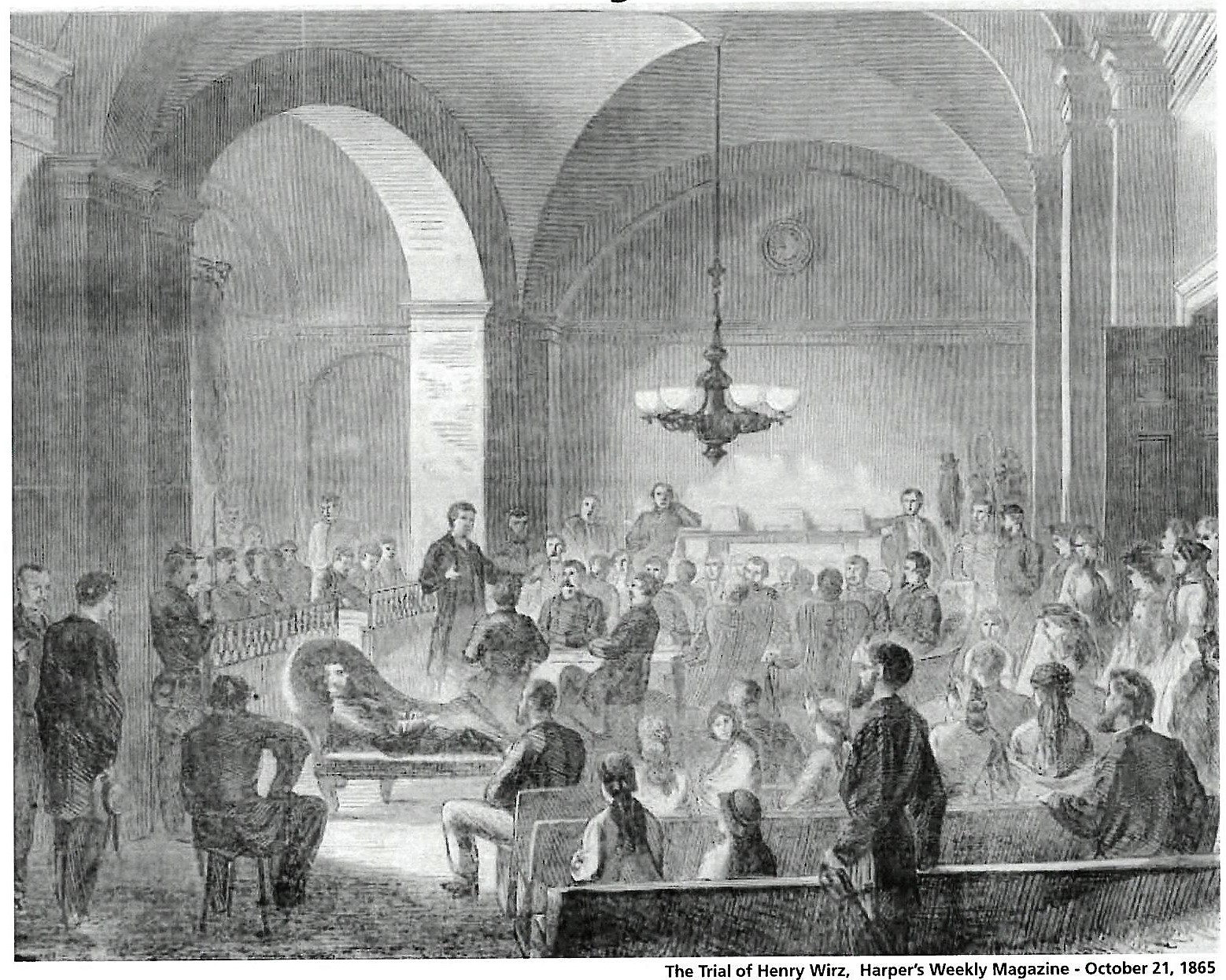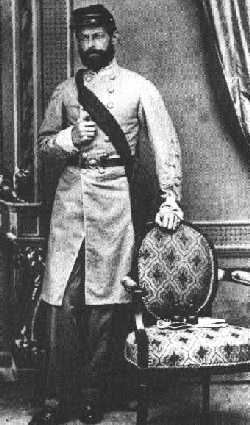Andersonville Prison (Henry Wirz) Trial (1865)

This work of death seems to have been the saturnalia of enjoyment for [Wirz], who amid these savage orgies evidenced such exultation and mingled with them such nameless blasphemy and ribald jests, as at times to exhibit him rather as a demon than a man. (From the Opinion of Judge Advocate General Holt in the Wirz Case, as sent to President Andrew Johnson.)
It was a horrific place. The deadliest place, in fact, of the Civil War. Camp Sumter, or Andersonville as it has come to be called, housed 32,000 Union prisoners at its most crowded, and they died at an alarming rate. In August of 1864, 2,997 prisoners died at Andersonville. On one August day alone, 207 men breathed their last.
Most died from disease, lack of medicine, unsanitary conditions, or starvation. But many died from bullets. Some were ripped apart by prison dogs. It was a hard place in a hard time--but with proper food, clothing, and clean water, most of the prisoners likely could have survived the war.
The commandant of the stockade, Henry Wirz, could not be blamed for every casualty at Andersonville. Some Wirz apologists have even suggested he deserves no blame at all, perhaps even a statue honoring his service. But the trial of Henry Wirz left little doubt that he was a cruel man who threatened and berated prisoners. Moreover, the record shows that with little provocation, Wirz sometimes ordered prisoners shot, sometimes shot them himself, or left it to his hounds to do the job.

Captain Henry Wirz
Wirz's defenders offer a variety of arguments: "War is hell" (it is) and "prison camps never a bed of roses" (true enough); "He did the best he could in bad circumstances" (he did make some efforts to improve conditions); "Nobody's perfect" (but some fall much further from perfection than others). Wirz's prosecutor called the commandant of Andersonville "more a demon than a man." He believed the evidence against Wirz to be compelling, almost beyond challenge. Wirz's defenders see most of the charges against him as weak and view him a scapegoat for a tragedy that was largely out of his control. A demon or a martyr-hero? As is often the case, the truth lies somewhere in between. .
Background
The tragedy of Andersonville was set in motion by the decision, in late October of 1863, of Secretary of War Edwin Stanton to halt the exchange of prisoners of war. Stanton gave as his reasons Confederate violation of the agreement for exchanging prisoners, as well as Confederate mistreatment of African-American soldiers and their white officers. Ending the exchange program also had military advantages. The Union had a manpower advantage and, as General Grant observed, why release “an active soldier [who will fight] against us?”
The following month, the Confederate Secretary of War, James Seddon, ordered a meeting to select a place in Georgia to hold a new Confederate prisoner of war camp. A site near the town of Andersonville was chosen, based on its proximity to the railroad and other resources such as timber and water. By the end of February 1864, a 16.5 acre, 20-foot high pine log stockade in the shape of a parallelogram was completed. Guard posts were stationed along the top. A low railing ran about 15 to 20 feet inside the stockade and parallel to the walls. The railing marked the “deadline.” Any prisoner who crossed the deadline would be shot without warning.Continued

